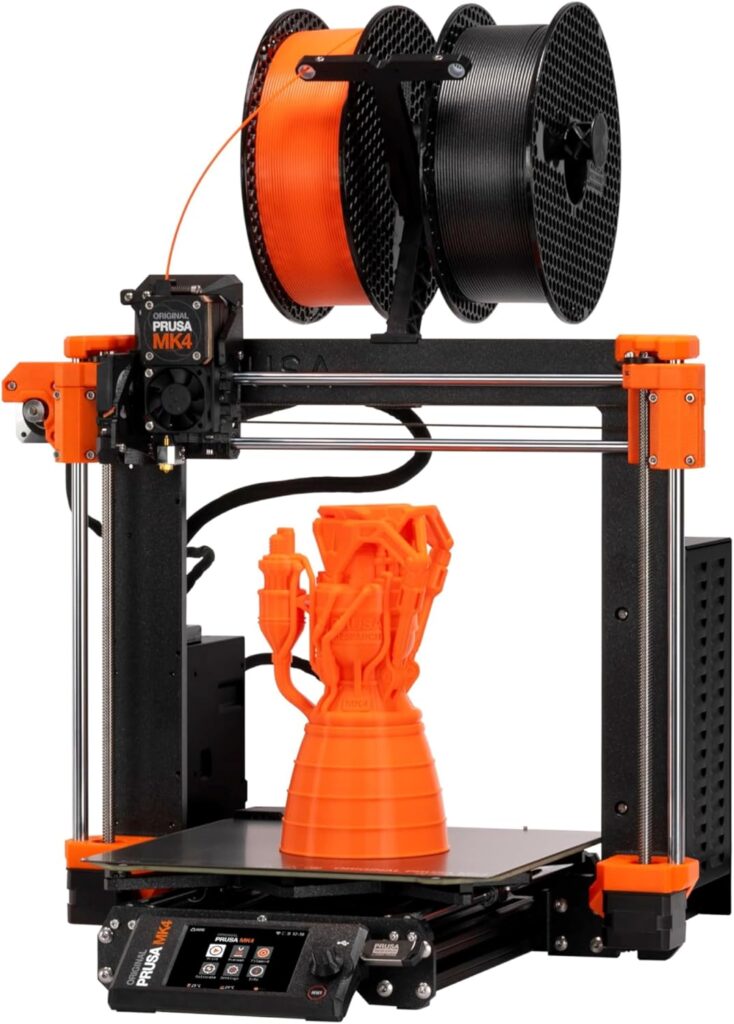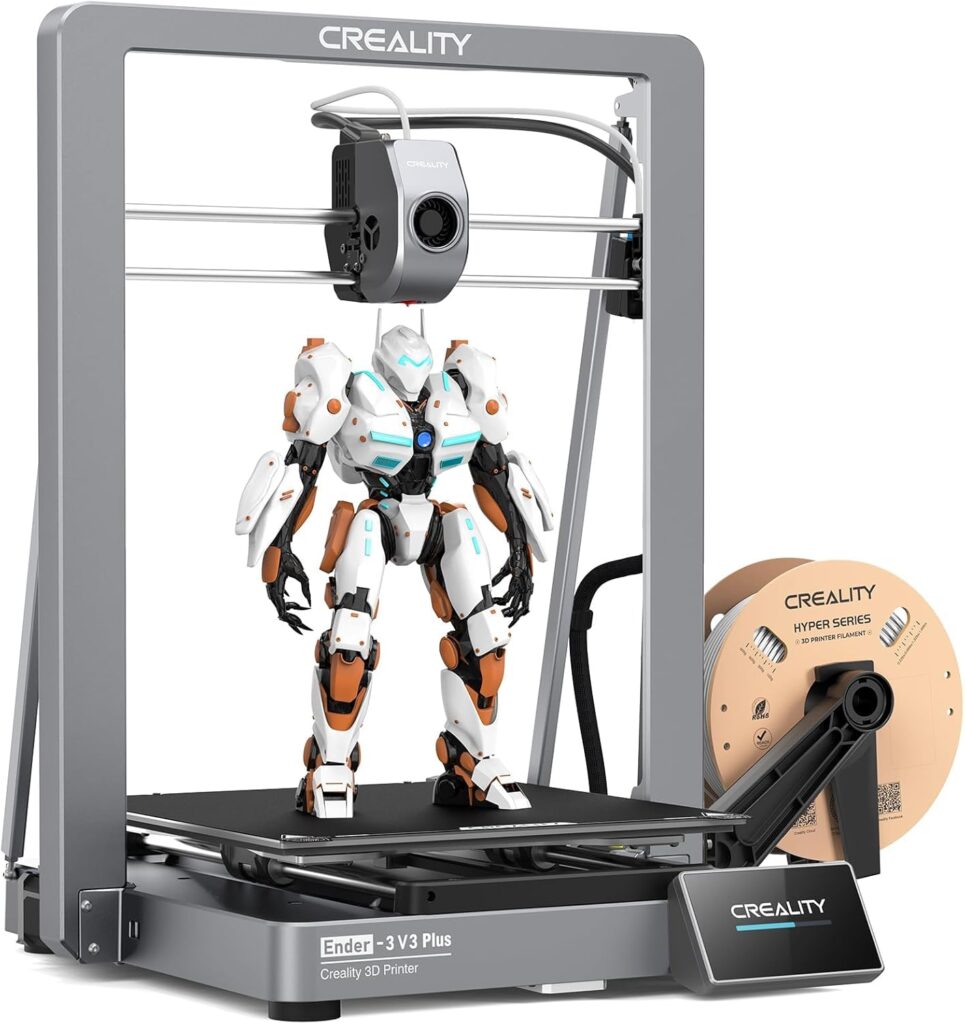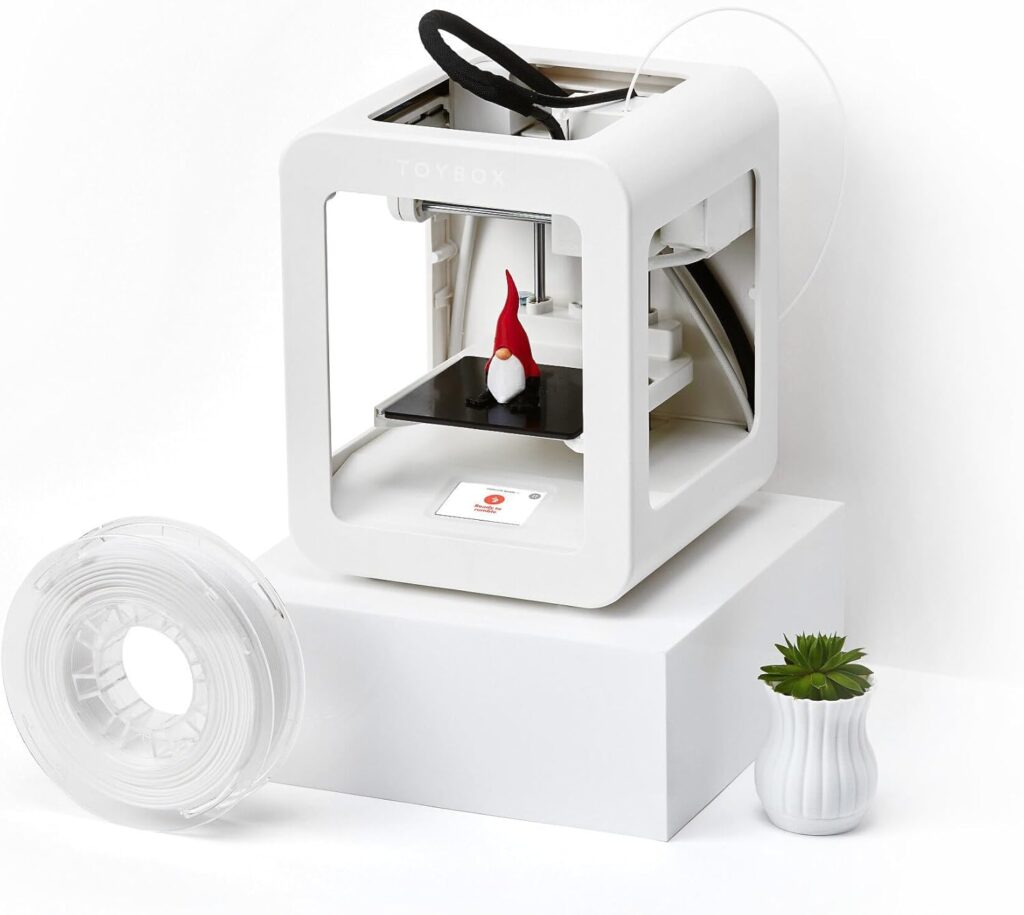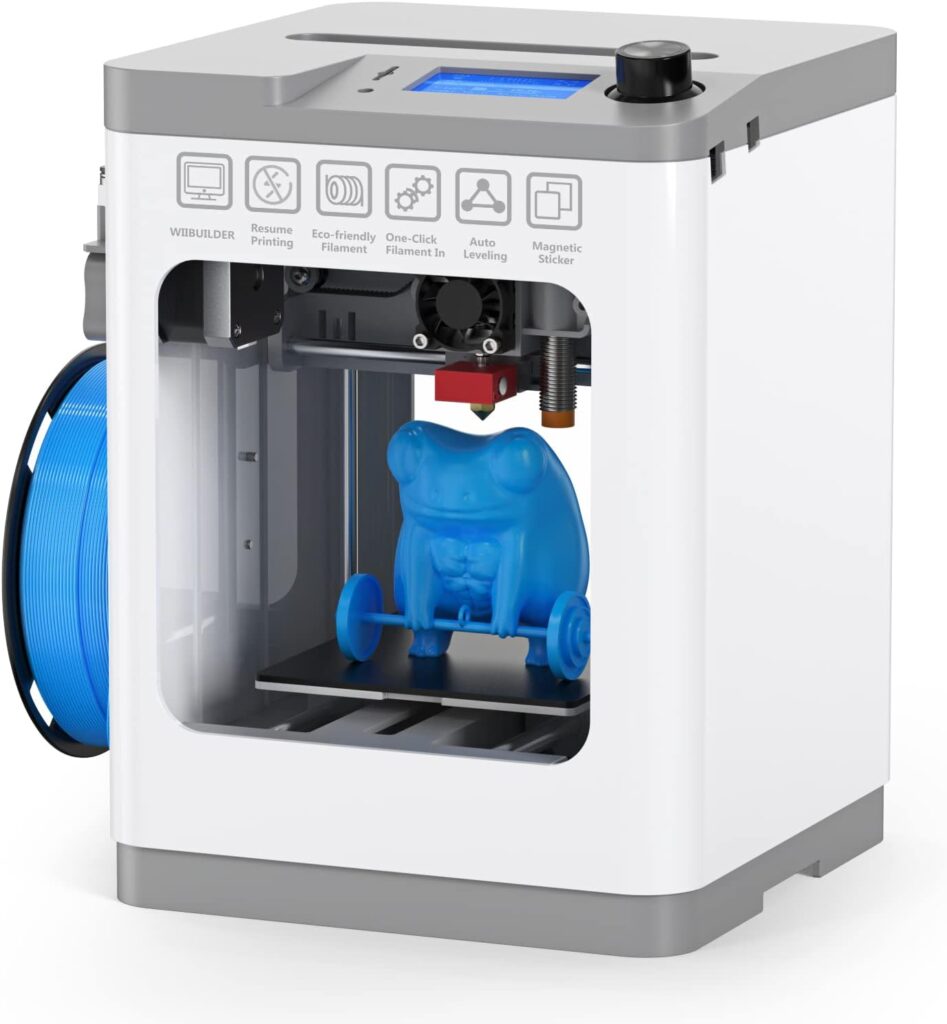Whether you’re a hobbyist, educator, or professional, the right 3D printer can turn your ideas into reality with precision and ease. From budget-friendly models for beginners to high-performance machines for advanced users, today’s best 3D printers offer impressive speed, accuracy, and versatility. Below are top picks that stand out for their reliability, print quality, and user-friendly features.
| Our Top 5 Picks | BUYING LINK |
|---|---|
| 1. Original Prusa MK4 3D Printer | Check Today’s Price on Amazon |
| 2. Creality Ender 3 V3 Plus | Check Today’s Price on Amazon |
| 3. ELEGOO Neptune 4 Plus | Check Today’s Price on Amazon |
| 4. Toybox 3D Printer for Kids | Check Today’s Price on Amazon |
| 5. Entina Mini 3D Printers Tina 2 | Check Today’s Price on Amazon |
1. Original Prusa MK4 3D Printer kit

The Original Prusa MK4 is a powerful DIY 3D printer kit that blends user-friendly design with high-end performance. Featuring automatic calibration, next-gen components, and Input Shaper technology for faster, smoother prints, it’s an ideal choice for both beginners and seasoned makers who enjoy building their own machine.
Key Features:
- DIY kit with step-by-step assembly
- Loadcell sensor for perfect first layers
- Nextruder with quick-swap nozzles
- 32-bit electronics and remote printing support
- Removable print sheets and filament sample included
Pros:
✓ Excellent print quality and consistency
✓ Fun and educational to assemble
✓ Customizable interface with one-click printing
✓ Strong community and responsive support
Cons:
✕ Requires self-assembly (not plug-and-play)
✕ Higher price point compared to basic entry-level models
2. Creality Ender 3 V3 Plus 3D Printer

The Creality Ender 3 V3 Plus is a high-speed, large-format 3D printer designed for makers who want efficiency without sacrificing precision. With auto-leveling, a robust CoreXZ structure, and a 600mm/s print speed, it’s built for rapid prototyping and large-scale printing projects.
Key Features:
- Large 300×300×330mm build volume
- Up to 600mm/s printing speed with CoreXZ motion system
- Auto calibration with one-tap leveling and Z-offset
- Direct drive extruder with stable metal frame
- Pre-assembled modules for faster setup
Pros:
✓ Excellent speed and efficiency for the price
✓ Large build area for bigger projects
✓ Accurate, wobble-free Z-axis printing
✓ Easy setup with minimal assembly required
Cons:
✕ Large footprint may not fit smaller workspaces
✕ High-speed settings may require fine-tuning for best quality
3. ELEGOO Neptune 4 Plus 3D Printer

The ELEGOO Neptune 4 Plus is a high-performance FDM printer built for speed, size, and precision. With Klipper firmware, a 300°C nozzle, and a large build volume, it’s ideal for creators who demand fast, detailed prints using a variety of materials. Auto-leveling, robust cooling, and multiple connectivity options make it user-friendly and production-ready.
Key Features:
- 500mm/s max print speed with Klipper firmware
- Large 320×320×385mm build volume
- 300°C high-temp nozzle for multi-material compatibility
- Dual-gear direct drive extruder with anti-clogging design
- Input shaping, pressure advance, and automatic calibration
- Wi-Fi, USB, and LAN connectivity
Pros:
✓ Fast and precise printing with excellent layer detail
✓ Handles a wide range of filaments
✓ Strong cooling and stable extrusion system
✓ Large build area for bigger or batch projects
Cons:
✕ Default firmware may have a learning curve for beginners
✕ High-speed printing requires optimal filament and fine-tuning
4. Toybox 3D Printer for Kids

Designed with young creators in mind, the Toybox 3D Printer is a fun, safe, and easy-to-use printer that brings toys to life at the push of a button. With an intuitive app, kid-friendly controls, and access to a huge catalog of printable toys, it’s the perfect starter printer for children.
Key Features:
- One-touch printing with no adult assistance needed
- Access to thousands of ready-to-print toys
- User-friendly app with design and upload tools
- Cloud-based Creator Space for custom creations
- Compact, standalone Wi-Fi-connected design
Pros:
✓ Extremely easy to use and safe for kids
✓ Massive toy library with new content added regularly
✓ No tools required to remove prints
✓ Compact and clutter-free setup
Cons:
✕ Small build volume limits print size
✕ Limited to lighter materials and basic prints
5. Entina Mini 3D Printers Tina 2

The Entina Tina 2 is a compact, beginner-friendly 3D printer that arrives fully assembled and ready to print right out of the box. With features like auto-leveling, a magnetic build plate, and a dual Z-axis for improved stability, it’s an ideal choice for kids, hobbyists, and first-time users looking for a fun and simple 3D printing experience.
Key Features:
- Fully assembled with one-touch auto-leveling
- Dual Z-axis rails for stable, high-precision printing
- Removable magnetic build plate for easy print removal
- Compact and lightweight (100×120×100mm build volume)
- 2.4″ LCD screen with offline printing via microSD
Pros:
✓ Ready to use within minutes – no setup required
✓ Great for beginners and educational use
✓ Stable, high-quality prints for a small machine
✓ Lightweight and portable design
Cons:
✕ Small build volume limits project size
✕ Limited material compatibility (best with PLA)
Conclusion
Whether you’re a beginner exploring 3D printing for the first time or an experienced maker seeking speed, precision, and versatility, there’s a 3D printer to match every need and skill level. From kid-friendly models like the Toybox and Entina Tina 2 to powerful performers like the Original Prusa MK4, Creality Ender 3 V3 Plus, and ELEGOO Neptune 4 Plus, each printer offers unique strengths. Consider your printing goals—be it fun, education, or prototyping—and choose a model that balances features, ease of use, and performance. With the right 3D printer, your creative ideas can come to life right from your desktop.